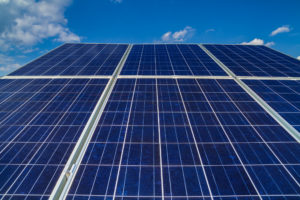Solar energy has become a prominent player in the quest for sustainable and renewable power sources. In recent years, a groundbreaking innovation known as solar roads has emerged, presenting an exciting prospect for transforming our transportation infrastructure into energy-generating networks. This article will delve into solar roads, exploring their benefits, technology, and prospects.
Contents
- 1 Key Takeaways
- 2 Understanding the Concept of Solar Roads
- 3 The Advantages of Solar Roadways
- 4 How Solar Roads Work
- 5 The Benefits of Solar Roads
- 6 Solar Technology for Roadways and Beyond
- 7 Challenges and Future Considerations
- 8 Expert Insights From Our Solar Panel Installers About Solar Roads: Paving the Way for Clean Energy
- 9 Experience Solar Excellence with Us!
- 10 Conclusion
- 11 FAQ
Key Takeaways
- Solar roads harness the power of the sun to generate clean and renewable energy, offering advantages such as reduced carbon footprint, enhanced energy efficiency, and economic opportunities.
- Integrating solar panels into road surfaces enables electricity production at the point of consumption, promoting energy independence and grid resilience.
- Solar roads have the potential to revolutionize transportation infrastructure, improve road safety, and pave the way for a more sustainable future.
Understanding the Concept of Solar Roads
Solar roads, also known as solar roadways or solar road panels, represent a groundbreaking approach to transforming our transportation infrastructure into energy-generating networks. This concept involves integrating photovoltaic technology directly into road surfaces, allowing them to harness solar energy and convert it into electricity. Let’s delve deeper into the concept of solar roads and their potential.
The Advantages of Solar Roadways
Solar roadways offer many advantages, impacting our society and environment. These advantages include:
Renewable Energy Generation
Solar roads utilize the power of the sun to produce clean and renewable energy. By harnessing solar energy directly from road surfaces, solar roadways can significantly reduce our dependence on fossil fuels, lowering carbon emissions and contributing to a more sustainable future.
Enhanced Energy Efficiency and Grid Independence
Solar roads improve energy efficiency by generating electricity at the point of consumption. This decentralized approach minimizes transmission losses associated with traditional centralized power generation, making energy utilization more efficient. Moreover, solar roadways can enable local energy production, making communities more self-sufficient and less reliant on the power grid.
Reduced Environmental Impact
By transitioning to solar roadways, we can reduce the environmental impact of transportation infrastructure. Solar roads help mitigate greenhouse gas emissions by generating clean energy, combating climate change, and promoting cleaner air quality. This transition also contributes to the preservation of natural resources and ecosystems.
Economic Opportunities and Cost Savings
Solar road installations create job opportunities in the renewable energy sector, stimulating local economies. Additionally, solar roadways offer long-term cost savings by reducing energy expenses and maintenance costs associated with traditional infrastructure. Integrating solar roads into existing infrastructure can bring economic benefits and increased energy independence.
Improved Safety and Traffic Management
Solar roads incorporate intelligent features that enhance road safety and traffic management. LED lights embedded within the solar panels can be programmed to display road markings, signs, and lane indicators, improving driver visibility. These smart road technologies can potentially reduce accidents and enhance overall traffic flow.

How Solar Roads Work
Solar roads employ innovative technology to capture solar energy and convert it into electricity. Here’s an overview of how solar roads work:
Solar Panel Integration
Solar road panels are integrated directly into the road surface. These panels are designed to withstand vehicles’ weight, resist wear and tear, and maintain high energy conversion efficiency. They can be made from durable materials such as tempered glass or specialized solar cells embedded in an asphalt or glass surface.
Energy Conversion
When sunlight strikes the solar panels, the photovoltaic cells within the panels convert the solar energy into electricity through the photovoltaic effect. The electricity generated can power various applications or be stored in batteries for later use.
Intelligent Features and Energy Storage
Solar roads often incorporate intelligent features to enhance functionality and safety. LED lights embedded within the solar panels can be used for road markings, signage, or lane indicators. Solar road systems can also include energy storage, such as batteries, to store excess electricity generated during the day. This stored energy can be utilized during low solar availability, ensuring a consistent and reliable power supply from the solar road system.
The Benefits of Solar Roads
Solar roads offer a wide range of benefits across different domains. Let’s explore the key advantages in detail:
Environmental Impact and Carbon Footprint Reduction
Solar roads play a significant role in reducing the carbon footprint of transportation infrastructure. By generating clean and renewable energy, solar roadways help mitigate greenhouse gas emissions, combat climate change, and contribute to a more sustainable future.
Energy Independence and Resilience
Solar roads promote energy independence by generating electricity locally. Communities can become more self-sufficient and less reliant on the power grid, enhancing energy resilience during power outages or emergencies.
Economic Opportunities and Cost Savings
Solar road installations create job opportunities in the renewable energy sector, stimulating local economies. Moreover, solar roads offer long-term savings by reducing energy expenses and maintenance costs associated with traditional infrastructure.
Improved Safety and Road Management
Intelligent features integrated into solar roads improve road safety and traffic management. LED lights embedded within the solar panels enhance visibility and can be used for road markings, signage, or lane indicators. Smart road technologies can also collect data on road conditions, traffic flow, and weather, enabling better road management strategies.
Promotion of Clean Transportation
Solar roads align with electric vehicles (EVs) growth and promote clean transportation. Solar roadways can be combined with EV charging infrastructure, providing convenient and sustainable charging options for electric vehicle owners.

Solar Technology for Roadways and Beyond
The development of solar roads has spurred advancements in solar panel technology. Researchers and engineers continually explore materials, designs, and manufacturing processes to optimize solar panels for road surfaces. Some notable developments and possibilities include:
Improved Solar Cell Efficiency
Researchers are focused on enhancing the efficiency of solar cells, allowing for better energy conversion and improved power generation from solar road panels.
Durability and Longevity
Engineering solar panels to withstand the weight of vehicles, resist wear and tear, and endure extreme weather conditions is a critical consideration. Advancements in materials and manufacturing techniques are being pursued to create durable and long-lasting solar road panels.
Integration into Various Transportation Infrastructures
Solar road technology is not limited to roads alone. It can be integrated into other transportation infrastructures such as highways, sidewalks, bike paths, and parking lots. This opens up new possibilities for renewable energy generation and sustainable transportation networks.
Beyond Roadways
Solar technology extends beyond road surfaces. Integrating solar panels into rooftops, walkways, and public spaces further expands the potential for clean energy generation. Additionally, solar technology can be harnessed in various applications, such as powering LED lights, providing electricity for nearby buildings, or even powering electric vehicle charging stations.
Challenges and Future Considerations
While solar roads offer immense potential, they also face certain challenges and considerations that need to be addressed for wider adoption. Some key challenges include:
Durability and Longevity
Solar road panels must withstand heavy loads, resist wear and tear, and endure extreme weather conditions. Ongoing research and development are necessary to enhance the durability and longevity of solar panels while maintaining optimal energy conversion efficiency.
Aesthetics and Integration
Balancing the aesthetics of solar roadways with their functionality is crucial for public acceptance. Solar road systems should be visually appealing and seamlessly integrated into existing infrastructure without compromising safety or efficiency.
Cost-Effectiveness
The cost of solar road installations and maintenance remains a consideration. Ongoing advancements in materials, manufacturing techniques, and scalability can reduce costs and make solar roads more economically viable.
Collaborative Research and Standardization
Continued collaboration between researchers, engineers, and policymakers is necessary to drive the advancement and standardization of solar road technology. Shared knowledge, best practices, and regulations can help overcome challenges and accelerate the adoption of solar roads on a larger scale.
Expert Insights From Our Solar Panel Installers About Solar Roads: Paving the Way for Clean Energy
Integrating solar panels into roadways is a brilliant innovation. Solar roads not only generate renewable energy but also contribute to the resilience and sustainability of our infrastructure.
Senior Solar Engineer
Solar roadways offer a dual benefit: transforming our transportation network into an energy grid and reducing our carbon footprint significantly. It’s a win-win for the environment and our economy.
Renewable Energy Consultant
The development of solar roads marks a significant step towards a future where clean energy is seamlessly integrated into everyday life. The potential to improve road safety and manage traffic with embedded LED lights is truly groundbreaking.
Project Manager
Experience Solar Excellence with Us!
Trust in Solar Panels Network USA, where our seasoned experts deliver top-quality solar solutions for homes and businesses nationwide. With a legacy of countless successful installations and a commitment to sustainable energy, we’re your reliable partner in the solar journey. Ready for a brighter, eco-friendly future? Call us now at (855) 427-0058 and harness the power of the sun!
Conclusion
Solar roads present an exciting opportunity to revolutionize our transportation systems and pave the way for clean energy. We can redefine sustainable transportation, enhance energy efficiency, and reduce our carbon footprint by harnessing solar power through road surfaces. With ongoing advancements in solar panel technology and collaborative research efforts, the future of solar roads looks promising. By embracing this innovative technology, we can pave the way toward a greener, more sustainable future for future generations.
FAQ
Are solar roads practical?
Solar roads have great potential in generating renewable energy and transforming transportation infrastructure. However, their practicality depends on cost-effectiveness, durability, and integration into existing road systems. Ongoing research and advancements are being made to address these considerations and improve the viability of solar roads.
How do solar-powered roads work?
Solar-powered roads, also known as solar roads or solar roadways, utilize specially designed solar panels integrated into the road surface. These solar panels capture sunlight and convert it into electricity through photovoltaic technology. The generated electricity can be used to power various applications, stored in batteries, or fed into the power grid.
What country has solar roads?
Several countries have been actively exploring and implementing solar road projects. France, for instance, launched the “Wattway” project, which involved installing solar panels on roadways in various regions. The United States, specifically the state of Idaho, has also implemented solar road projects in Sandpoint, showcasing the potential of this technology. Additionally, other countries such as the Netherlands, China, and South Korea have also conducted pilot projects and research in the field of solar roads.
About the Author
Solar Panels Network USA stands at the forefront of solar energy solutions, driven by a team of seasoned solar engineers and energy consultants. With over decades of experience in delivering high-quality solar installations and maintenance, we are committed to promoting sustainable energy through customer-centric, tailored solutions. Our articles reflect this commitment, crafted collaboratively by experts to provide accurate, up-to-date insights into solar technology, ensuring our readers are well-informed and empowered in their solar energy decisions.

